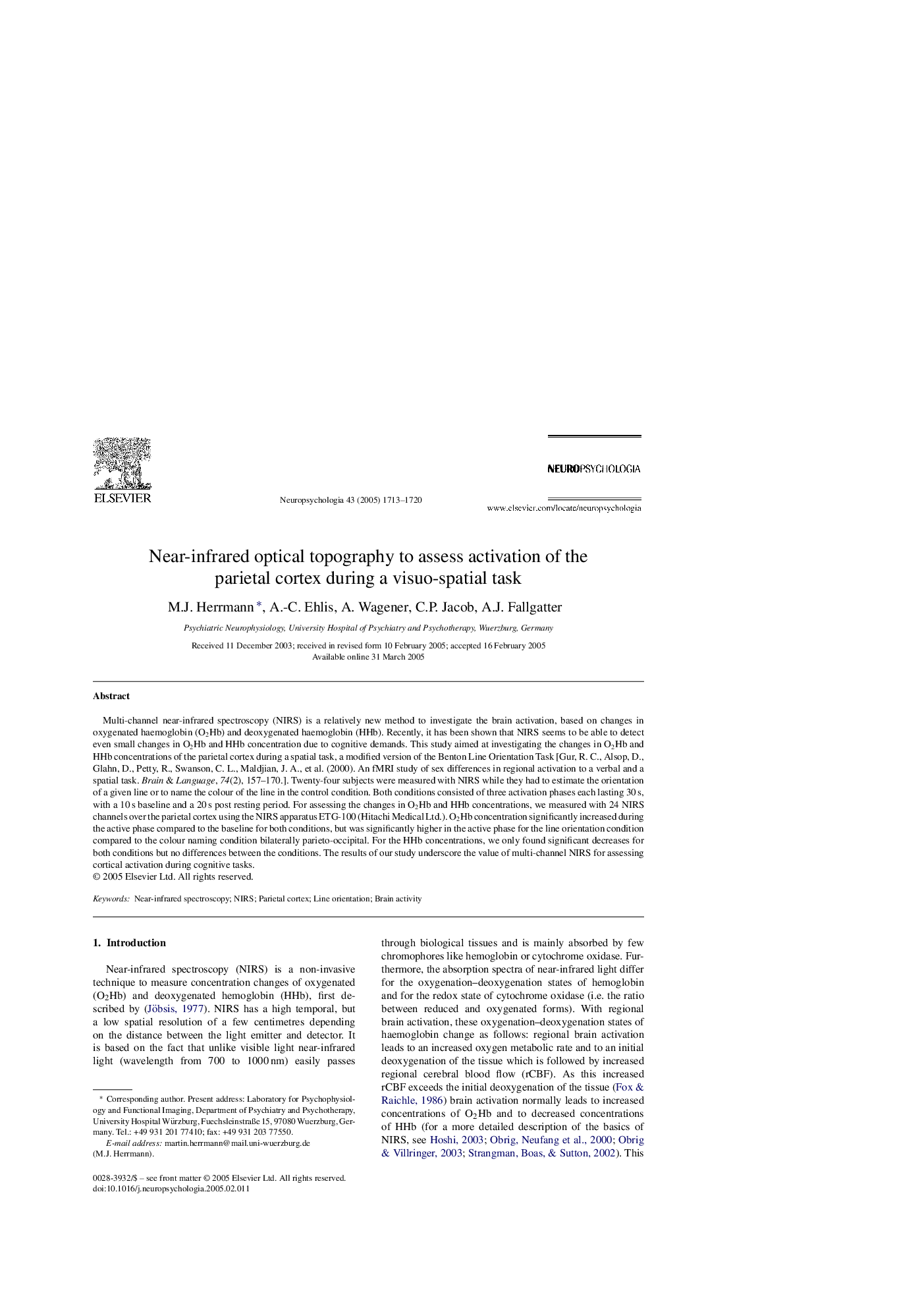| Article ID | Journal | Published Year | Pages | File Type |
|---|---|---|---|---|
| 10467244 | Neuropsychologia | 2005 | 8 Pages |
Abstract
Multi-channel near-infrared spectroscopy (NIRS) is a relatively new method to investigate the brain activation, based on changes in oxygenated haemoglobin (O2Hb) and deoxygenated haemoglobin (HHb). Recently, it has been shown that NIRS seems to be able to detect even small changes in O2Hb and HHb concentration due to cognitive demands. This study aimed at investigating the changes in O2Hb and HHb concentrations of the parietal cortex during a spatial task, a modified version of the Benton Line Orientation Task [Gur, R. C., Alsop, D., Glahn, D., Petty, R., Swanson, C. L., Maldjian, J. A., et al. (2000). An fMRI study of sex differences in regional activation to a verbal and a spatial task. Brain & Language, 74(2), 157-170.]. Twenty-four subjects were measured with NIRS while they had to estimate the orientation of a given line or to name the colour of the line in the control condition. Both conditions consisted of three activation phases each lasting 30Â s, with a 10Â s baseline and a 20Â s post resting period. For assessing the changes in O2Hb and HHb concentrations, we measured with 24 NIRS channels over the parietal cortex using the NIRS apparatus ETG-100 (Hitachi Medical Ltd.). O2Hb concentration significantly increased during the active phase compared to the baseline for both conditions, but was significantly higher in the active phase for the line orientation condition compared to the colour naming condition bilaterally parieto-occipital. For the HHb concentrations, we only found significant decreases for both conditions but no differences between the conditions. The results of our study underscore the value of multi-channel NIRS for assessing cortical activation during cognitive tasks.
Related Topics
Life Sciences
Neuroscience
Behavioral Neuroscience
Authors
M.J. Herrmann, A.-C. Ehlis, A. Wagener, C.P. Jacob, A.J. Fallgatter,
